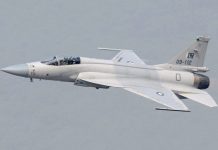ISLAMABAD: The intricate details of Pakistan’s import trends have recently come to light in a trade statistics release, revealing intriguing patterns and fluctuations which have had a big impact on the country’s economic environment.
The dataset, which covers November 2023 as well as the six months from July to December 2023, offers an essential perspective for comprehending the complex processes influencing Pakistan’s trading connections with other countries.
The most recent data shows that imports have followed an interesting trajectory. Imports increased to Rs1,295,968 million in November 2023, a slight rise of 1.66% over the same month the previous year. When compared with the December 2022 data, which show a significant gain of 13.94% with imports totaling Rs1,156,237 million during that period, the growing trend becomes even more evident.
Converting these numbers to US dollars provides a different view of Pakistan’s import situation. With a total import value of $4,650 million as of December 2023, the provisional data shows a 2.45% increase from the same month the previous year. Nonetheless, a noteworthy 9.60% decline is noted in comparison with December 2022, when imports totaled $5,144 million.
When looking at the data over a longer period, the July-December 2023 data shows a total import value of Rs7,533,700 million. This represents an 8.20% increase over the same period in the previous fiscal year, illustrating how Pakistan’s international trade is changing. For the same six-month period in FY2023–24, total imports were USD26,266 million (provisional), a 15.84% drop from $31,209 million for the same period in the previous fiscal year.
Talking to media, Deputy Director at the State Bank of Pakistan Abdul Qadir said, “This intricate web of import dynamics holds considerable sway over Pakistan’s economic health. The recent data shows the need for a nuanced and strategic approach to address the challenges and opportunities presented by these import trends. As imports play a pivotal role in shaping the domestic market, fluctuations in values and quantities can have cascading effects across various sectors, necessitating a thoughtful response from policymakers and industry stakeholders alike.”
Qadir said, “The policymakers are confronted with the delicate task of balancing the benefits of international trade with safeguarding the nation’s economic stability. In response to the potential impact of import fluctuations, there exists a need for a proactive policy framework.”
“Measures such as diversifying the import-export portfolio, promoting the growth of domestic industries, and enhancing bilateral trade agreements can contribute to a more resilient and adaptive economic environment. Additionally, fostering innovation through targeted investments in research and development can position Pakistan to not only weather the current challenges but also emerge as a more self-sufficient and globally competitive player.”
Dr Hasan Daud Butt, Senior Advisor at the Sustainable Development Policy Institute (SDPI), told media, “The decrease in import values when expressed in US dollars warrants a careful consideration, as it indicates potential challenges and shifts in global currency dynamics. As we navigate this intricate economic situation, it becomes imperative for the policymakers to strike a delicate balance between promoting international trade and fortifying domestic economic pillars.”
“The fluctuations in import values underscore the need for a diversified and resilient economic strategy that not only mitigates short-term challenges but also positions Pakistan for long-term growth and stability on the global economic stage. Engaging in open dialogues with industry experts and international partners can provide invaluable insights to the policymakers that foster sustainable economic development,” said Daud. –INP





